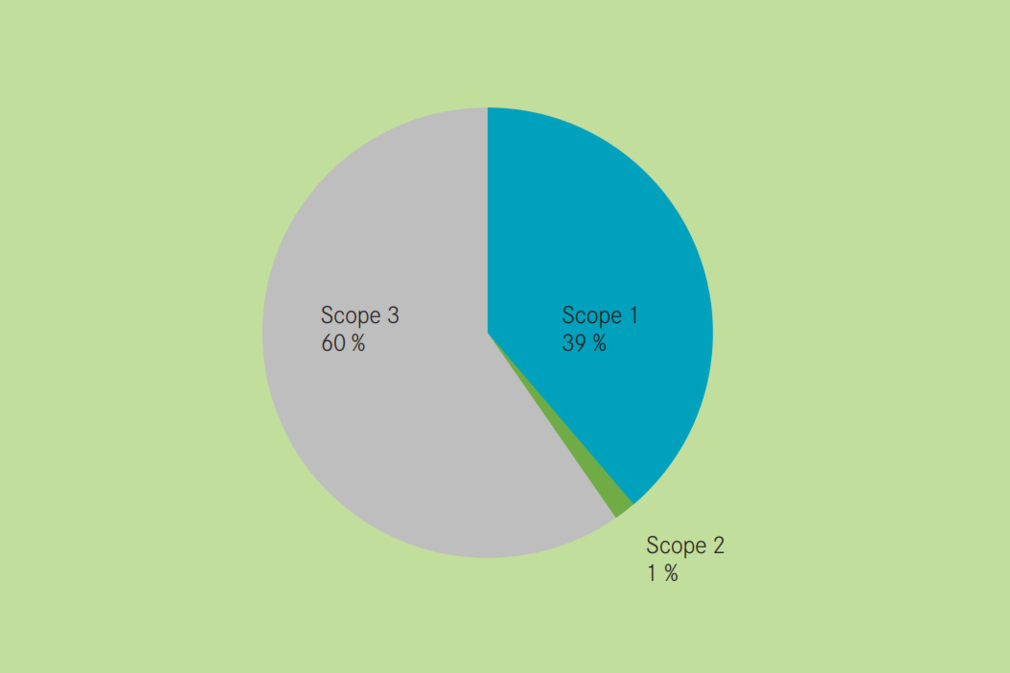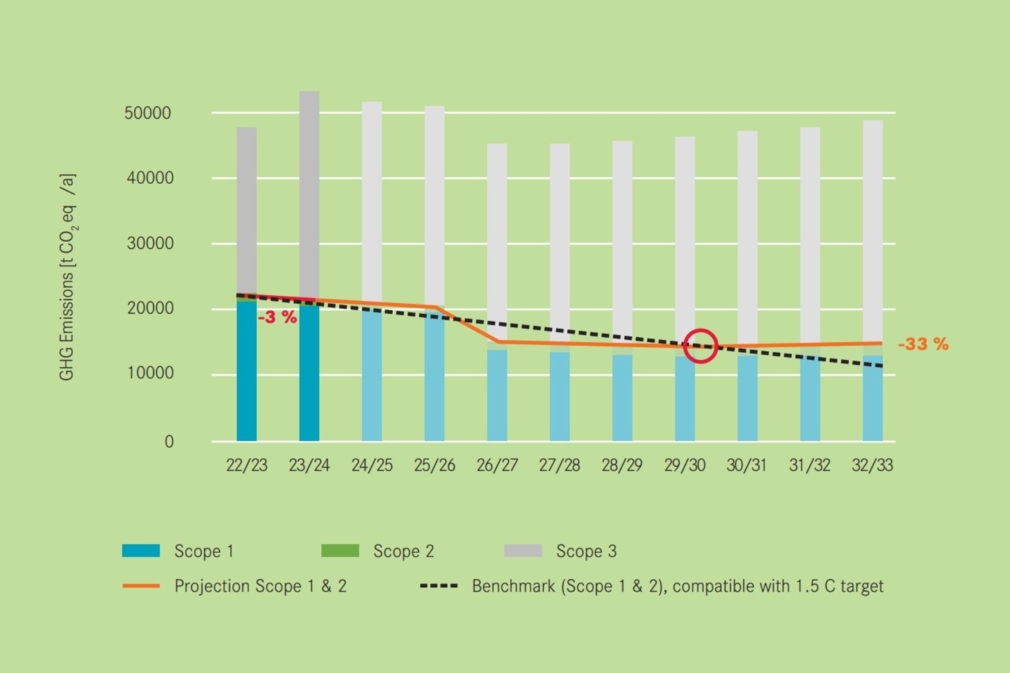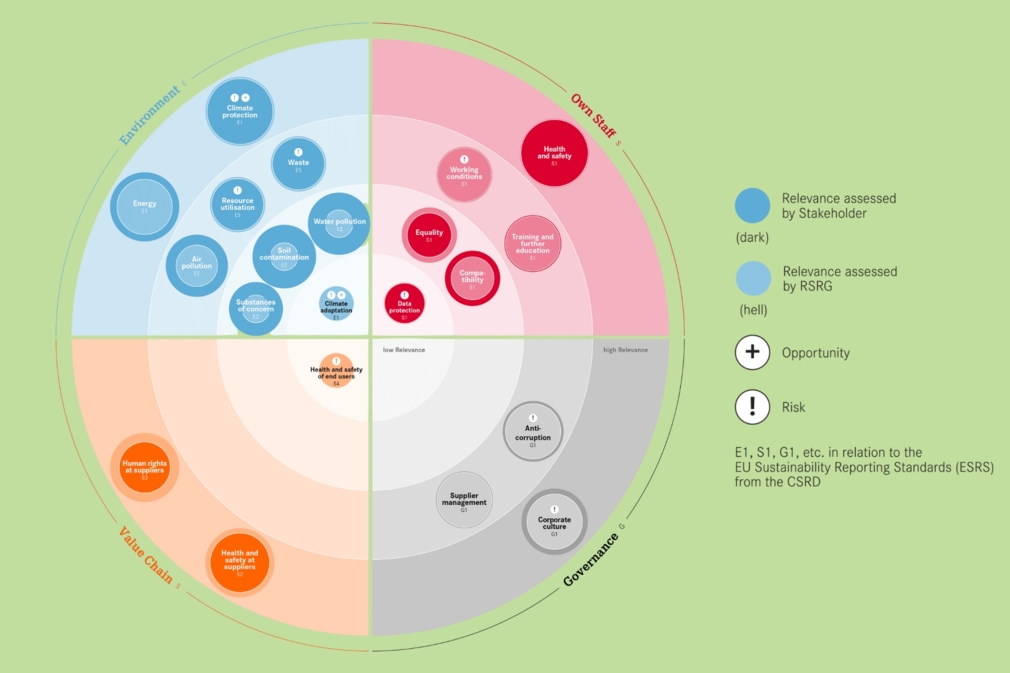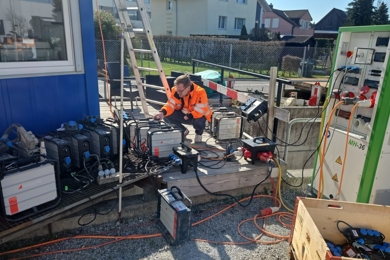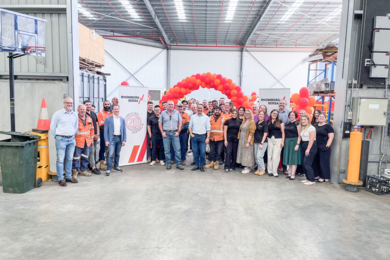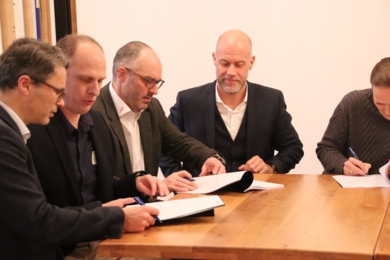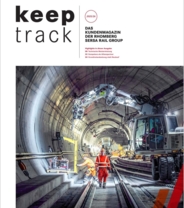The Next Stage of RSRG’s Climate Strategy
To achieve net zero emissions by 2050 in line with the Paris Climate Agreement, RSRG measures its emissions annually, implements climate protection measures, and evaluates their effectiveness. Naturally, RSRG continued this path in 2023/24 as well:
RSRG Climate Strategy at a Glance
- Greenhouse gas balance 2023/24: ~53,000 tonnes CO2eq
(Scope 1: 39% I Scope 2: 1% I Scope 3: 60%) - Main energy source: Diesel, 6.7 million liters per year
- Projection model including growth (+) and climate measures (–)
- Reduction of ~33% CO₂eq in Scope 1+2 by 2032/33 (on SBTi benchmark until 2029/30, further efforts required thereafter) despite very strong growth
- Main decarbonization measures: Diesel substitution 69%, electrification 14%, improved energy efficiency, switch to green electricity products, and awareness raising
In FY 2023/24, around 53,000 tonnes of CO₂ were emitted (see Fig. 1), an increase of approx. 11% compared to 2022/23.
Figure 2 also shows the target pathway for Scope 1 & 2 in accordance with SBTi*. It is clear that RSRG is on benchmark until 2029/30; however, further efforts are required afterwards to achieve net zero. For the first time, RSRG’s corporate growth was also considered in the greenhouse gas emissions projection. As a result, even more ambitious measures will need to be taken in the future to achieve the targets.
Figure 1: RSRG greenhouse gas emissions 2023/24: 53,000 t CO2
Figure 2: Comparison of RSRG’s actual emissions versus projected emissions to 2032/33
*The Science Based Targets initiative (SBTi) enables companies to set net zero targets based on the latest climate science, thereby contributing to the goals of the Paris Agreement (limiting global warming to 1.5°C).
Greenhouse gas emissions (GHG) are expressed as CO2 equivalents (CO2eq).
Scope 1 includes direct emissions from the company (e.g. combustion of fuels such as diesel).
Scope 2 includes emissions from the generation of purchased and consumed energy (electricity or heat).
Scope 3 includes other indirect emissions resulting from RSRG’s activities along the upstream or downstream value chain (e.g. purchased materials, suppliers, or customers).
Further Environmental Indicators
As part of the greenhouse gas inventory, additional environmental indicators are analyzed. These provide a better understanding of energy consumption and allow measures to be implemented in a more targeted way.
Renewable Energy Sources 2023/24
- Share of total energy consumption from renewable sources: 9%
- Share of renewable sources in Scope 2: 61%
- Own PV generation in MWh/a: 841
Climate protection is a long-term journey that requires constant adjustments and new solutions. While there are many hurdles to overcome, lessons are learned, and measures are continuously adapted. The goal remains clear: net zero by 2050. By continuously advancing the strategy and moving forward together with partners and clients, the foundation for a more climate-friendly future is being laid.
The Double Materiality Analysis
In summer 2024, RSRG conducted a double materiality analysis in accordance with the EU Corporate Sustainability Reporting Directive (CSRD). This process identified opportunities and risks in the field of sustainability and defined thematic areas to develop a sustainability strategy.
Alongside internal workshops, a comprehensive stakeholder survey was conducted in which employees, customers, suppliers, and other interest groups were asked to evaluate the most important sustainability topics.
In this way, RSRG ensures that not only the internal perspective but also the assessment of stakeholders and interested parties is taken into account. At this point, a heartfelt thank you to all who participated in the survey!
The results of this analysis are presented below. All material (and therefore reportable) topics are shown, with the weighting of relevance ranging from the inner circle (low relevance) to the outer circle (high relevance).
Figure 3: RSRG Materiality Matrix
As a result, RSRG has positioned itself comprehensively to strategically develop these material topics, strengthen the area of sustainability, and create transparency.

